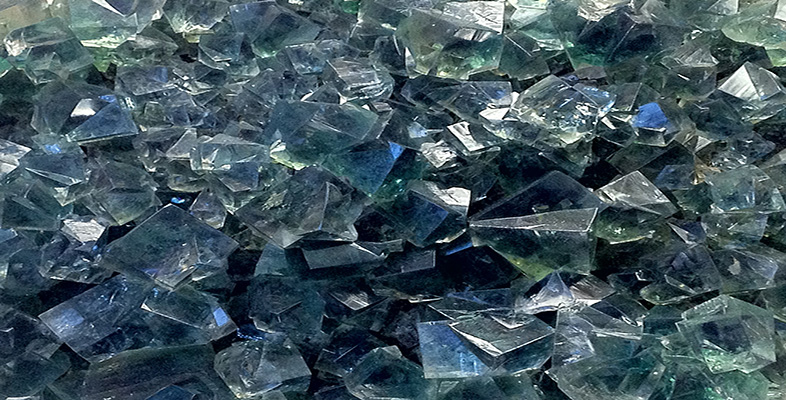2.4 Summary of Section 2
- Light consists of electromagnetic waves that vibrate in all directions at 90° to the direction of travel of the light beam. White light is a mixture of coloured light with a range of frequencies.
- The change in speed of light as it travels between media of different densities is known as refraction. The ratio of the speed of light in a given medium and its speed in air (strictly, in a vacuum) is the refractive index of that medium.
- A polarising filter allows light to pass through, vibrating in one plane known as the permitted vibration direction. The light is plane-polarised.
- Plane-polarised light passing through an anisotropic mineral splits into two plane-polarised rays that vibrate at 90º to each other. These rays travel at different speeds and give rise to double refraction, a property that is well developed in transparent calcite rhombs.
- In plane-polarised light, some minerals absorb different wavelengths of light depending on the orientation of the crystal. This produces colours that vary with crystal orientation: a property known as pleochroism.
- When an isotropic crystal (with the same optical properties in all directions) is placed between two polarising filters with their permitted vibration directions at 90° (i.e. crossed polars), no light will pass through, irrespective of the mineral's orientation (it appears uniformly black on rotation). Cubic minerals show this effect.
- When an anisotropic crystal (with different optical properties in different crystallographic directions) is placed between two polarising filters and the mineral is rotated through 360º, there are four positions of darkness (extinction positions) that are 90º apart, between which the mineral appears coloured (has an interference colour) with an intensity that peaks halfway between extinction positions.
- The difference in refractive index of light rays passing along the permitted vibration directions of an anisotropic mineral is its birefringence. When two such rays emerge, they are out of step, and when recombined on passing through a second, crossed polariser, interference colours are produced.
- The sequence of interference colours as produced by increasing birefringence and simulated by a quartz wedge is represented on a Michel-Levy chart. Maximum interference colours can be diagnostic of particular minerals.
- Opaque minerals do not transmit light of any kind.
- A polarising microscope with a rotating stage and two polarising filters provides the facility to observe a range of diagnostic optical properties for mineral grains presented as a thin slice, 30 µm thick. Such rock slices mounted on glass are known as thin sections.
- Other key diagnostic optical properties of minerals include relief, cleavage traces and twinning.
